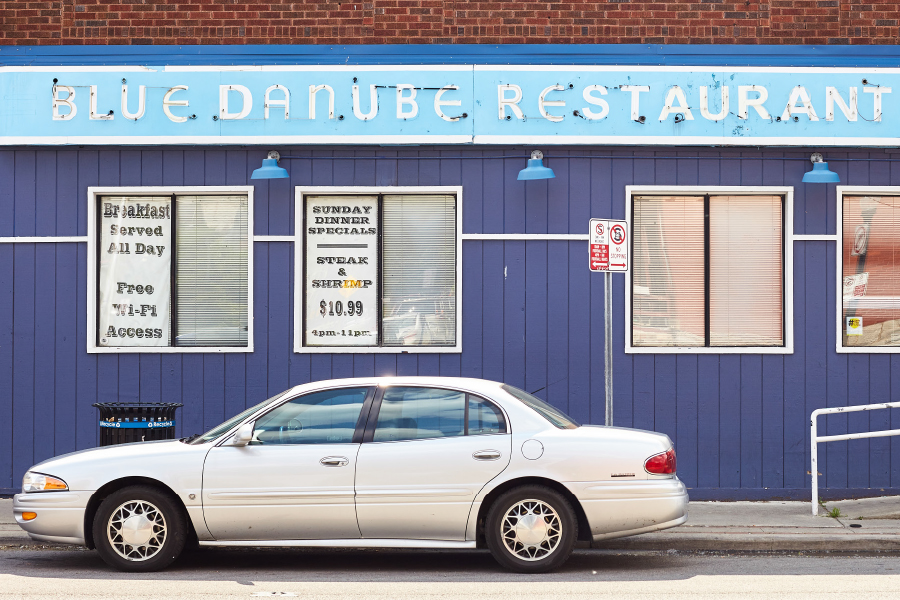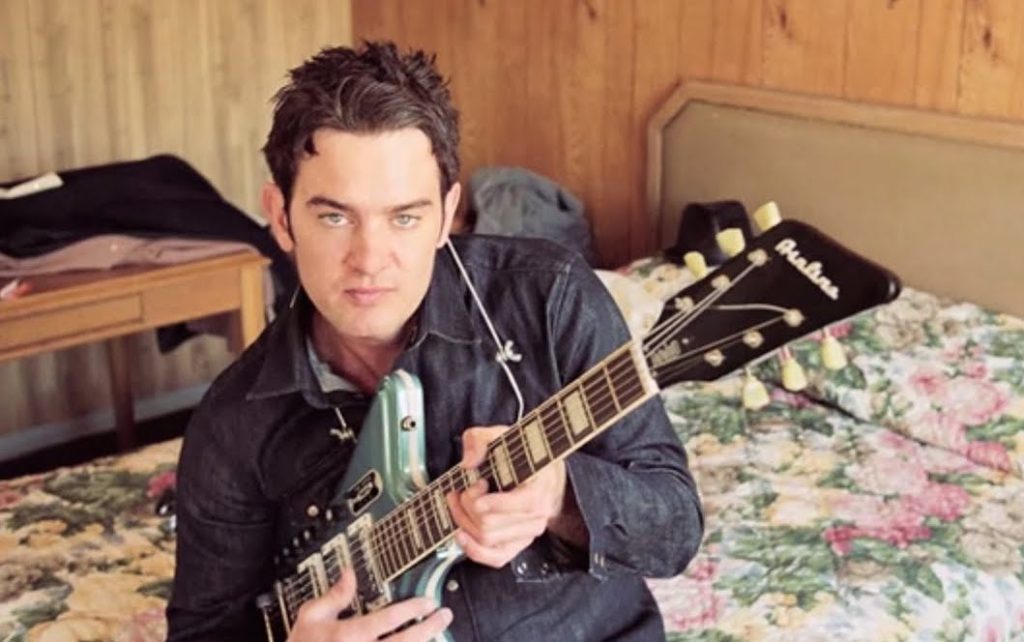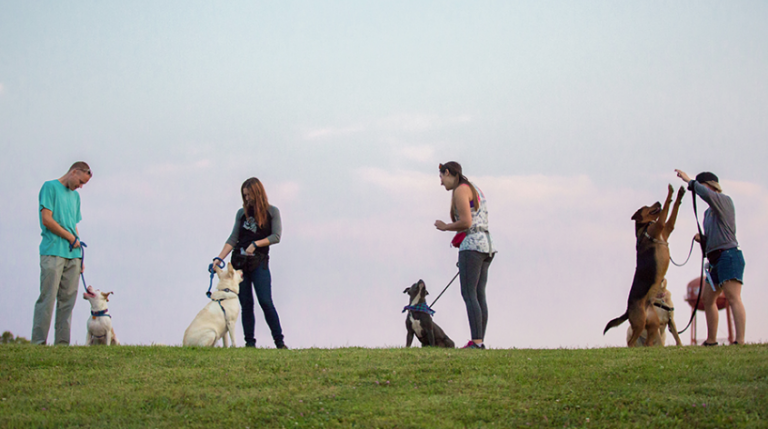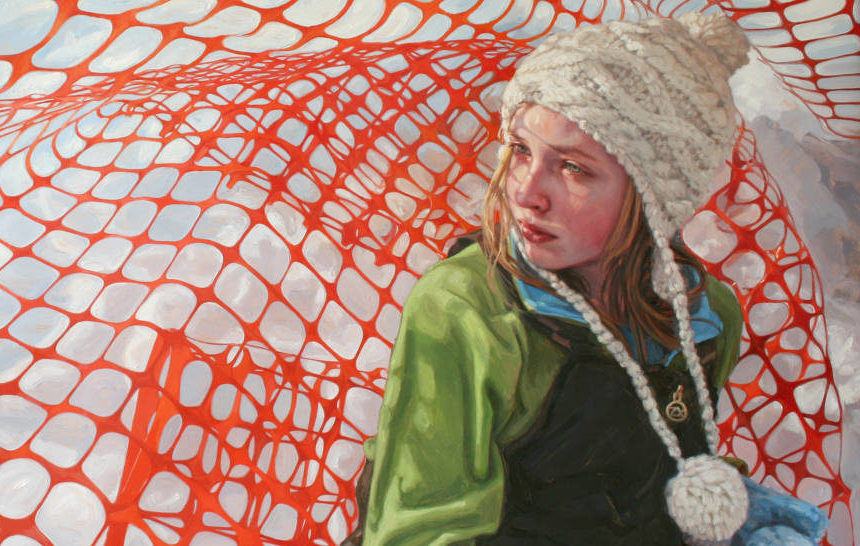Originally published in the Summer 2018 issue of Stock & Barrel

When the beloved Blue Danube abruptly announced they were closing after 78 years, the news nearly broke hearts and local Facebook feeds. But early reports of their eminent demise were perhaps a bit premature.
Yes, the most recent operator Bob Swaim had planned to hold on into June. And the Margetis family, which has actually owned the building for decades while retaining rights to the name, quietly revealed plans to remodel and reopen the restaurant in the coming months. No one has offered much in the way of details or assurances, not wanting to become the victim or villain in this story. And neither narrative would likely allay fears about possibly losing yet another Columbus culinary landmark to a pretentious gastropub or gaudy watering hole with no soul.
Rather than dwell on what we don’t know, let’s celebrate what we do know about the Dube, hoping that a people’s history might sway both sides into preserving part of what makes The Blue Danube unique, instead of letting a cloudy and contentious transition turn into an excuse to sabotage or abandon what folks love most.
Gaye Spetka’s story stretches back to the early years, when her parents first got together following WWII. “It was more posh back then when my parents had their first date there. My father went to OSU after the war, and my mother was shocked when he ordered a beer,” she laughed. Spetka became a regular herself in the ‘70s. She was thankful for the chance to pass on the legacy before it may be lost. “It was a treat to take my niece and her now husband there to share the story of how her grandparents met. But so much of what I remember of the campus area isn’t the same; it’s ticky-tacky steel and glass structures and asphalt parking lots.”
Colin Dearth is among four generations of faithful patrons, marking family milestones at the Dube for decades. “My grandfather was an Army medic who came to Ohio State and met my grandmother. My parents were both juniors at OSU in the ’60s when I was born and lived right around the corner,” he recalled. Dearth grew up to serve in the 82nd Airborne and Special Forces, but didn’t forget simpler times as a teenager spent scarfing down fries smothered in chicken gravy with friends. “I’d come home and spend 20 minutes going over the menu, but still ordered the steak and eggs every time for like 10 years. And PBR pints for a buck-fifty? They may as well have filled up my trunk.” Now a father of three, he orders the vegetarian chef’s salad and hasn’t had a beer in years. “I’ve celebrated too many birthdays there to count. All of my daughters sat in highchairs at the Dube.”
Natalie Thomson was a waitress there in the ’80s, when the Margetis family previously ran the place. “My father played saxophone and we’d walk from Dick’s Den down to the Dube for a bite to eat afterward. I started working there when I was 17. Some nights, I was the only waitress working as we got closer to close,” she revealed. An anachronism in the age of the smartphone, Thomson also remembers when tenants from the adjacent apartments used the payphone as their personal phone number, and waitresses would run next door to let folks know when they had a call. The experience was a far cry from her eventual occupation as a chef, though formative and unforgettable. “I’ve worked in fine dining restaurants, but I still love a greasy spoon.”
Rico Sullivan also discovered the Dube in the ’80s as a teen, when he and his brother used to sell hot dogs during game days at OSU. “After the game, we’d all go to the video arcade, then The Blue Danube and try to act all hip like the college students we saw there. I fell in love with the fish platter back then,” he recalled. “We loved the atmosphere of the place.” Sullivan went on to teach martial arts and took his students there as well. His wife is originally from Pakistan and still considers it her first true taste of America. “My wife and I eat there and always get nostalgic about our first date. It was heartbreaking to find out they are closing. I have a lot of great memories invested in The Blue Danube.”
Dawn Chapman used to sneak into bars and clubs with her fake ID, but actually came to the Dube when she wanted to be alone. “Sometimes, you just need to escape everyone. I was very shy, so I’d go there to write, smoke cigarettes, and drink coffee. It’s also the first place I ever had a gyro,” she recalled. But it proved difficult to be alone for long at The Blue Danube, forging friendships that endure to this day — and others just for the night. “I always hoped to paint a ceiling tile. ‘Paint a tile and we’ll add it to the pile,’ they said, but I never got around to it. I used to make jewelry, and a few of my designs were inspired by certain ceiling tiles. Tile 32 is still my favorite.”
Mike Cavender found something strangely familiar at The Blue Danube since moving to Columbus in the late ’90s. “There are so many places where we used to go that are gone now. Places like North Campus Video and the Dube weren’t homogenized and still seemed a little rougher around the edges. That’s how I felt back then — rougher around the edges,” he explained. Though a “committed carnivore,” Cavender admitted their black bean burger was his first, and a pleasant surprise. His wife was already familiar with the Dube, particularly its infamous jukebox, when they met. But he’d long considered it a litmus test for whether a date was the right fit. “If you go there on a first date and are both into that kind of place, it’s probably going to work out.”
Despite the brisk bump in business, as the days slipped toward the end of this chapter and the beginning of the next, the Dube’s most recent incarnation just couldn’t hold on any longer. In fact, the Friday after the initial announcement, they had to close early because the kitchen ran out of food and had to restock — perhaps a hint in hindsight foreshadowing the final week. As for the iconic neon inside and out, that Grilled Cheese and Dom Pérignon special, and the fate of those famous ceiling tiles, no one seems to know for sure what will stay or go. When asked prior to the unexpected last call, a bartender simply replied, “Bob’s got a lot on his plate.” ▩



